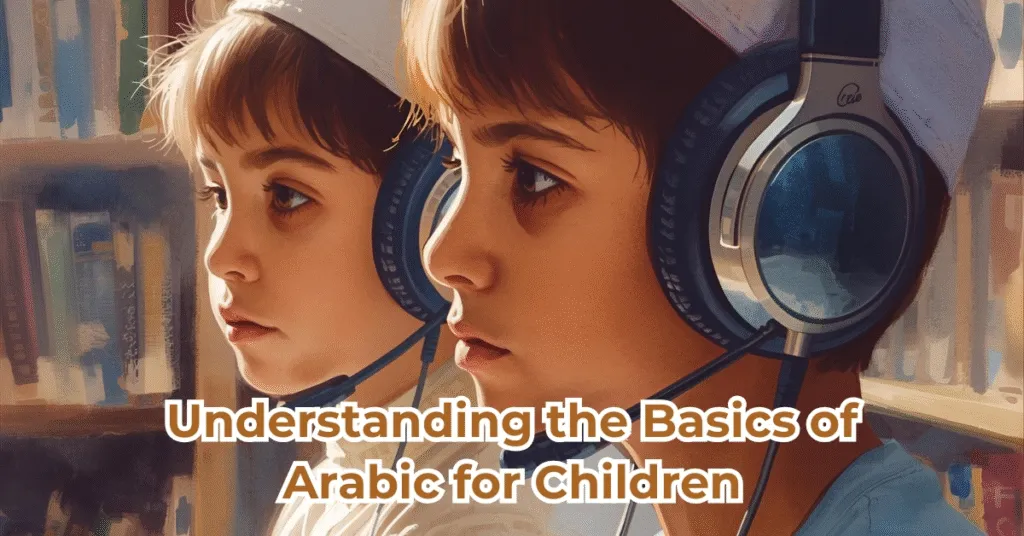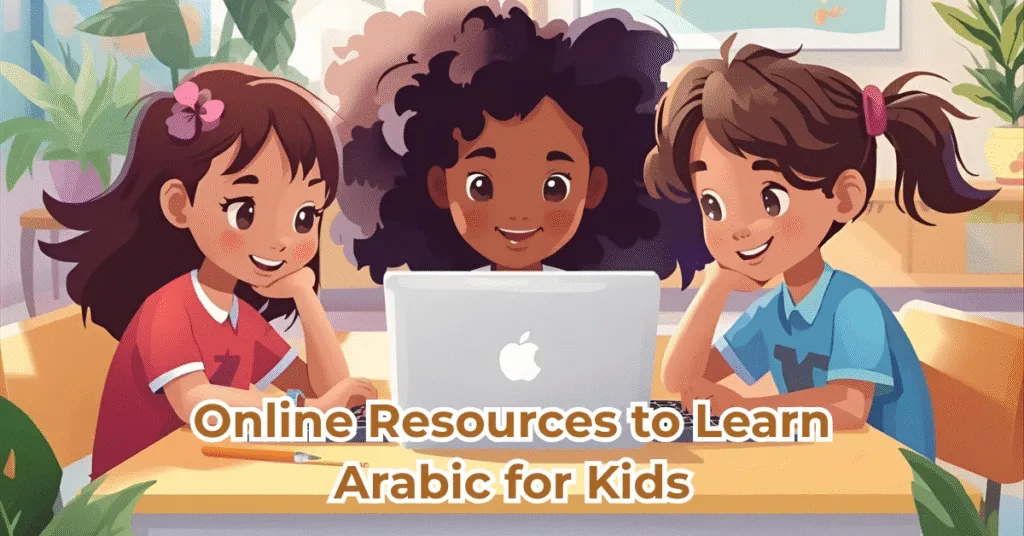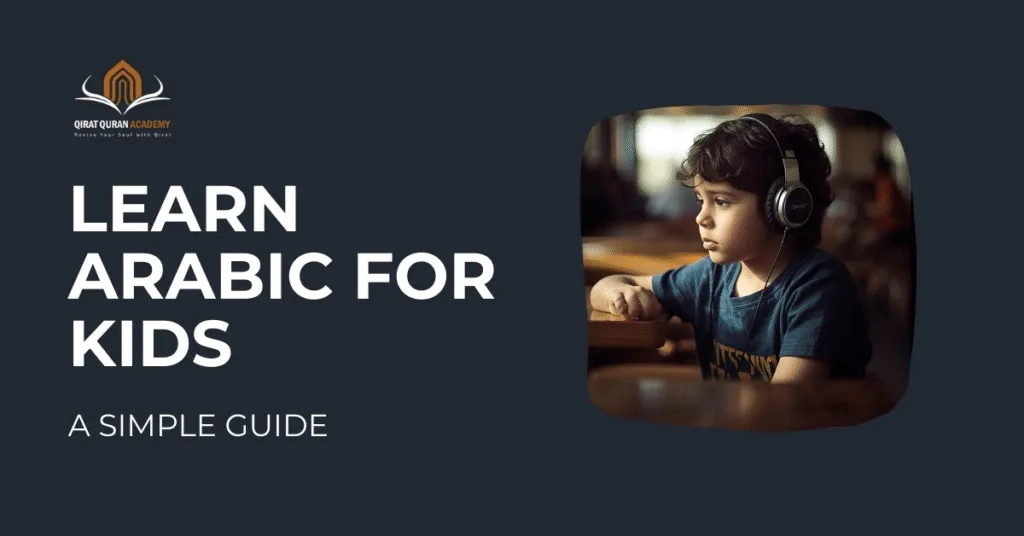Your child can feel teaching a new language such as opening the door of a completely new world. When it comes to learning Arabic for children, it is not only about words and letters – it is about connecting them with culture, history and even their roots. Children’s brain is like a sponge; First they start learning, it becomes easier. Imagine giving your child the key to communicating with millions of people around the world, while also understanding the prosperity of Islamic texts – amazing, correct?
The Importance of Early Language Learning
Research suggests that children who learn the language quickly develop the skills, creativity and even sympathy to solve better problems. Starting with Arabic in childhood is a strong foundation for later flow in life. When a language is introduced to youth, children also maintain more natural pronunciation, which is perfect for unique sounds and letters of Arabic.
Arabic and Its Cultural & Religious Significance
Arabic is not just a second language – it is the bridge of one of the richest cultures in the world. For Muslim families, it also holds religious significance. Learning Arabic can help children understand the Quran, Islamic prayer and traditional stories in their original form. Beyond religion, Arabic opens the doors of music, literature and connections with Arabic -speaking communities globally.
Understanding the Basics of Arabic for Children

Learn the basic Arabic letters, words and simple phrases that make the language learning fun and easy for children.
Arabic Alphabet: The First Step
The Arabic alphabet has 28 letters, and learning them is the first milestone for children. Start with fun flashcards, colored charts, or even alphabet songs. Make it fickle – love to add letters or letters with animals. For example, “أ” (alif) can be combined with “دسد” (lion). This makes the process memorable and pleasant.
Simple Words and Phrases Kids Can Learn
After mastering letters, children can move on to simple words and phrases like greetings:
- مرحبا (Hello)
- كيف حالك؟ (How are you?)
- شكرا (Thank you)
Using everyday objects around the house helps. Label things like “كرسي” (chair) or “كتاب” (book) and encourage your child to read aloud. Small, daily exposures make a big difference.
Fun Ways to Teach Arabic to Kids
Learn the basic Arabic letters, words and simple phrases that make the language learning fun and easy for children.
Games and Interactive Activities
Learning should not feel like homework. Use puzzles, matching games and memory cards to teach letters and words. Even simple board games like “Arabic Bingo” can turn into learning. Children are more likely to maintain information when they are fun.
Songs, Rhymes, and Storytelling
Songs and stories feel alive in Arabic. Play nursery rhymes in Arabic or tell small stories with pictures. Rejuvenation through music or stories helps children to make the vocabulary without stress. Think of it as applying seeds – they will sprout over time.
Online Resources to Learn Arabic for Kids

Explore the best websites, apps and video lessons that make Arabic attractive to learn and effective for children.
Best Websites and Apps
There are tons of online resources for children. Apply apps such as Duullingo Kids, fun with Arabic, or educational YouTube channel interactive lessons. For a more structured approach, Qiratquran.com provides initial-ordered Arabic lessons that simplify simple and attractive learning for children.
Using Video Lessons Effectively
Video lessons work best when added with practice. Watch together with your child and stop to repeat the words. Encourage them to mimic pronunciation – it helps to strengthen memory and speech skills together.
Tips for Parents to Support Arabic Learning
Practical tips and strategies for parents to help their kids practice and enjoy learning Arabic every day.
Creating a Daily Learning Routine
Consistency is key. Even 15 minutes a day can work wonders. Create a small routine:
- Morning: Letter recognition
- Afternoon: Vocabulary practice
- Evening: Fun activity or song
A routine builds habits without making learning feel like a chore.
Encouraging Practice Through Conversation
Talk to your child in Arabic whenever possible. Start with simple questions like “What is this?” or “Can you say hello?” Praise them for every effort—it boosts confidence and keeps motivation high.
Common Challenges and How to Overcome Them
Find practical ways to help children of common obstacles during Arabic learning and help them succeed.
Difficulty in Memorizing the Alphabet
Some letters in Arabic may look different or sound depending on their position in a word. Use recurrence, flashcard and tracing exercises. Remember, patience is your best tool.
Maintaining Interest Over Time
Children’s attention may be reduced. Mix activities, add games, songs and storytelling. Doing a adventure instead of a task.
The Role of Schools and Community in Learning Arabic
It is revealed how schools, classes and community activities can increase children’s Arabic learning experience.
Arabic Language Programs for Kids
Enroll your child in local Arabic classes or online courses. Being around the peers, those who are learning the same language can inspire them and provide healthy competition.
Cultural Activities and Social Learning
Encourage cultural programs, storytelling circles or participation in Quran text classes. Social education strengthens language skills and deepens cultural understanding.
Long-Term Benefits of Learning Arabic
It is revealed how Arabic learning promotes cognitive skills, cultural understanding, and strengthens the connection of heritage and religion.
Cognitive and Brain Development
Learning a second language improves memory, problem-solution skills and even multitasking abilities. Arabic, with its unique scripts and sounds, Creative methods challenges the brain.
Connection to Heritage and Religion
For families with Arabic roots or religious traditions, Arabic learning helps children to join their heritage. Understanding Quranic Arabic strengthens spiritual development and cultural identity.
Frequently Asked Questions (FAQs)
Children can start at the age of 3-4 years. Early exposure makes learning easy and more natural.
Yes! With interactive apps, video lessons and structured programs like Qiratquran.com, online learning can be highly effective.
With frequent daily practice, children can understand letters and simple words in 2-3 months. The flow takes more time but quickly starts construction.
Use games, songs, storytelling and rewards. Celebrate small achievements to promote confidence.
Absolutely. It helps to join the Quran’s teachings, for cognitive skills, cultural understanding and Muslim families.
Conclusion
More than remembering Arabic learning letters and words for children – it is opening a door of culture, religion and endless opportunities. With patience, fun activities, online tools and parents’ support, children can not only learn Arabic, but also enjoy the process. Start today, and see them flourishing in the world rich in language and meaning.




